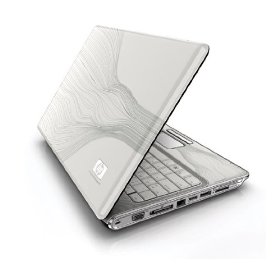Netbooks collide with laptops

Is the bloom off the netbook rose? It is for me, but not completely.
In 2009, I used and reviewed a variety of Dell, HP, Asus and Lenovo netbooks strategically distributed around my house - bedside, couch-side, wood stove-side. I simply pick one up when I need e-mail, Twitter, Facebook or access to my blog. They're light, durable, reliable and cramped.
The first generation Lenovo S10 I've used except for the curious swapping of the positions Fn and ctrl keys has been a tough little performer (in the interest of full disclosure, the Lenovo S10 was sent to it to me gratis and I've been lazy about returning it. The others I either bought or were loaners I returned so I only have a netbook couch-side now).

Now pricing on decent and much more powerful full size laptops is the same as forthcoming next generation of netbooks based on the new Pine Trail CPU/memory/graphics platform from Intel. ZDNet blogger John Morris in a Dec. 23rd post does a good job of explaining Pine Trail's impact on the forthcoming crop of netbooks.
But they'll be $300-$400 at least. The HP Pavilion dv4 2045 full laptop I am using to compose this post cost me a mere $290 at Best Buy a month ago. Sure, it was an open box deal that I bargained hard for after a bad experience with a Vista-based Toshiba M505 laptop (as a close-out, the M505 was only $415 - I liked it for the two weeks it worked).
The HP unit is still $630 on Amazon and while I've had very mixed experiences at Best Buy, it's still the place to find close-outs and open box deals on laptops. The HP Pavilion is a nice machine: it comes with a resplendent 14-inch display, 4 GB of RAM, AMD Turion II Dual Core microprocessor, 320 BG hard disk, a wonderful keyboard and Windows 7. My biggest fear is it will break or I will break it, but so far so good.
As an experiment, I took both laptop and netbook across the country to cover the first flight of the Boeing 787 Dreamliner a couple of weeks ago to determine which one I'd use the most. The laptop with vastly more power won and it's the only computer I would take on my next business trip. I only used the netbook in the plane where tray and seat real estate was extremely limited. I used the laptop in the hotel room and even on the 30-mile bus ride between Paine Field in Everett and Boeing Field in Seattle to upload first flight photos to ZDNet.
I feel some loyalty to netbooks, though. They're easy to pick up and obviate the need to run upstairs to fetch the laptop. I loaded Windows 7 release onto the S10 last May and it's been a mini workhorse. But netbook keyboards are cramped and 10-inch displays (and occasionally 12) are too small to do much of anything but check e-mail.
Better netbook performance can't overcome of obvious size limitations of netbooks. Netbook sales in 2009 doubled to nearly 35 million, but vendors could be running up against the size barrier in 2010 for which moderating growth is forecast. Therein lies the challenge to PC makers.
Follow me on Twitter.
This post was originally published on Smartplanet.com